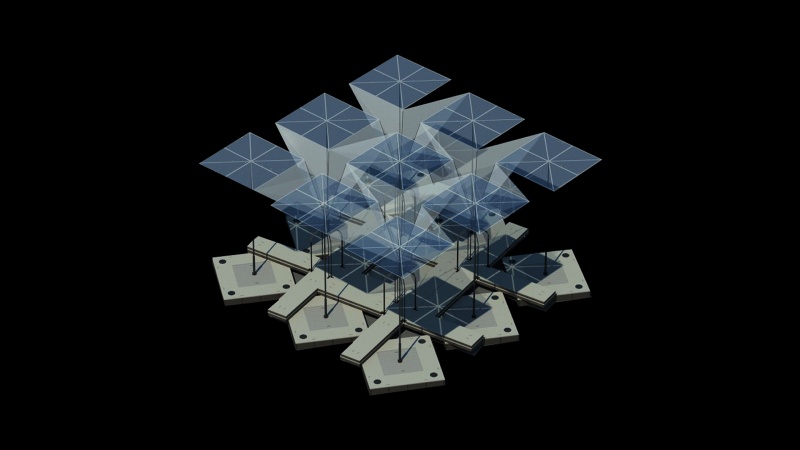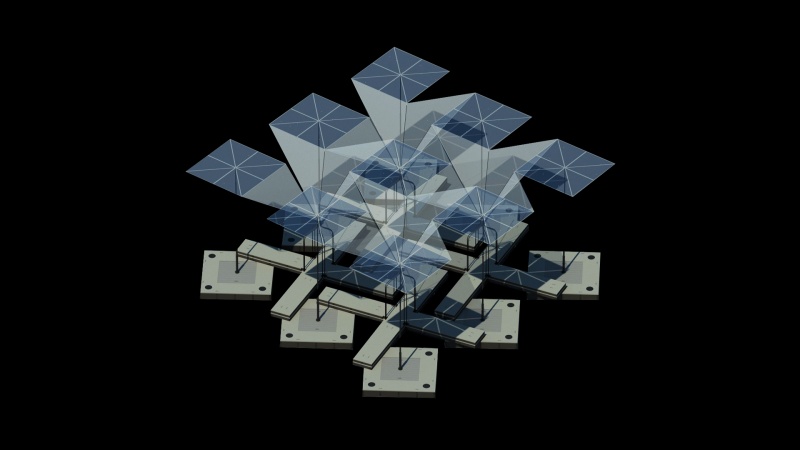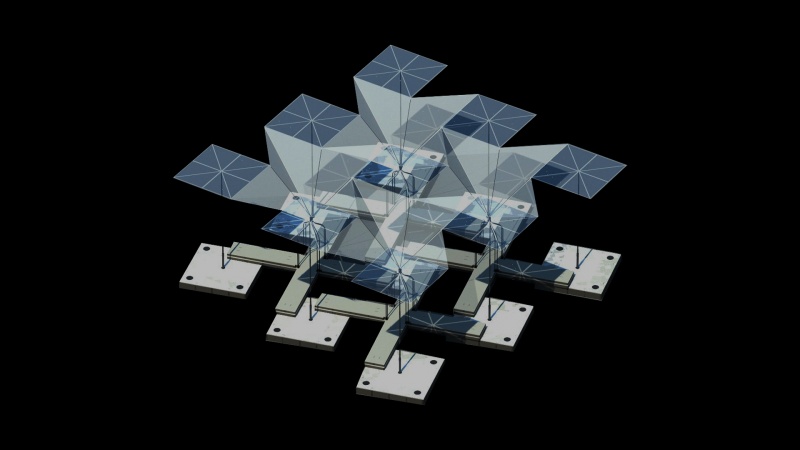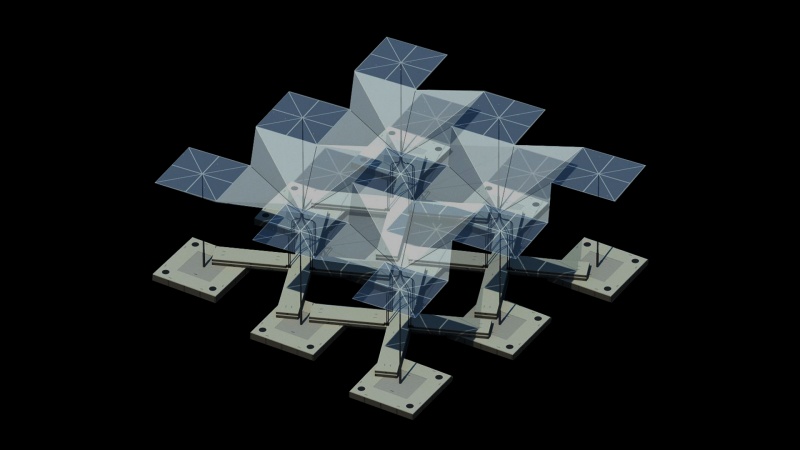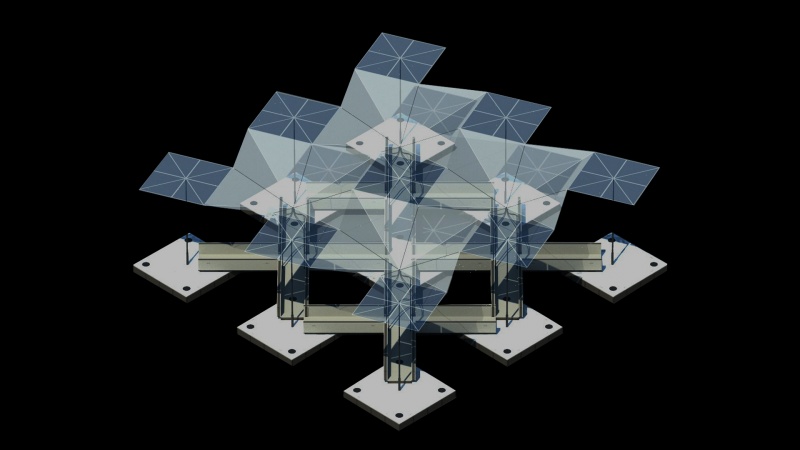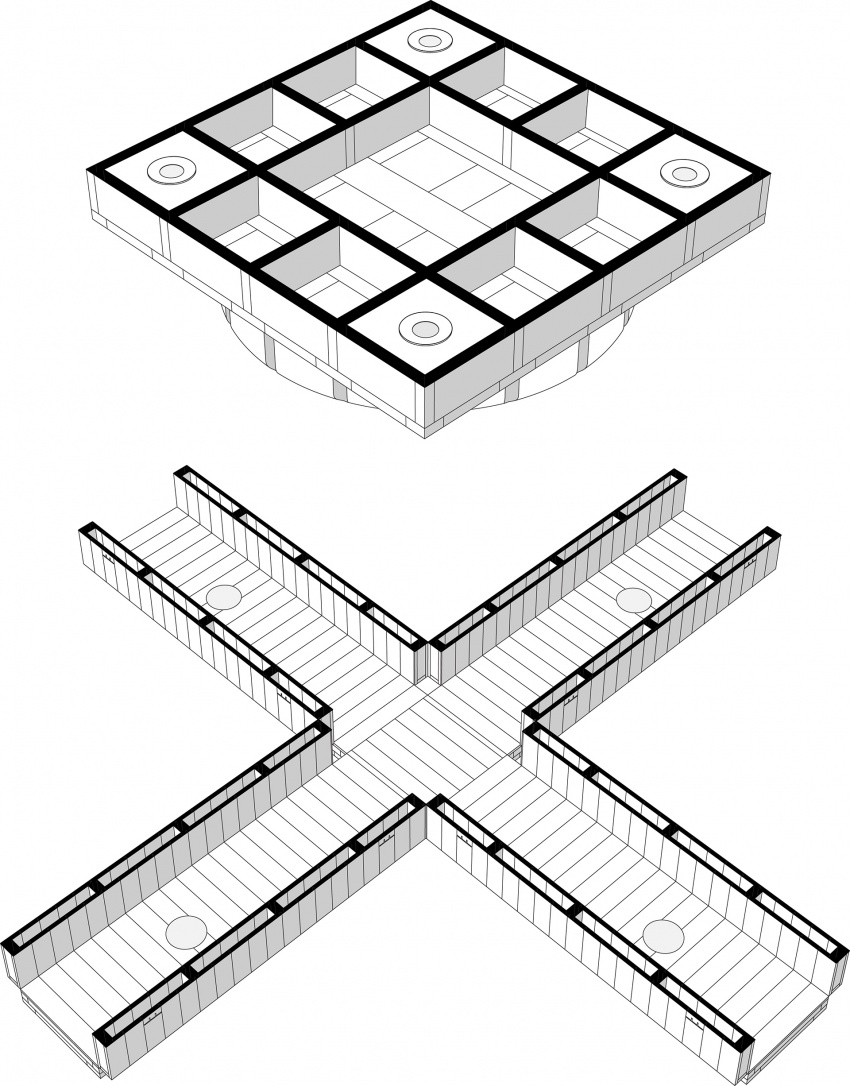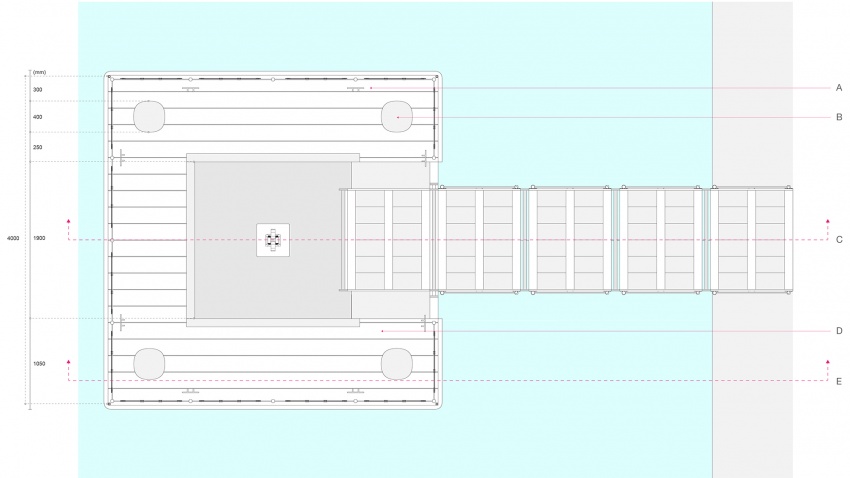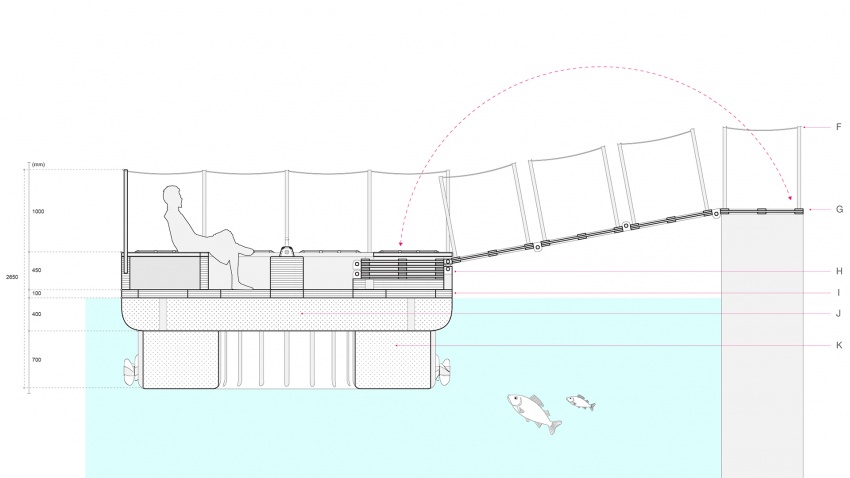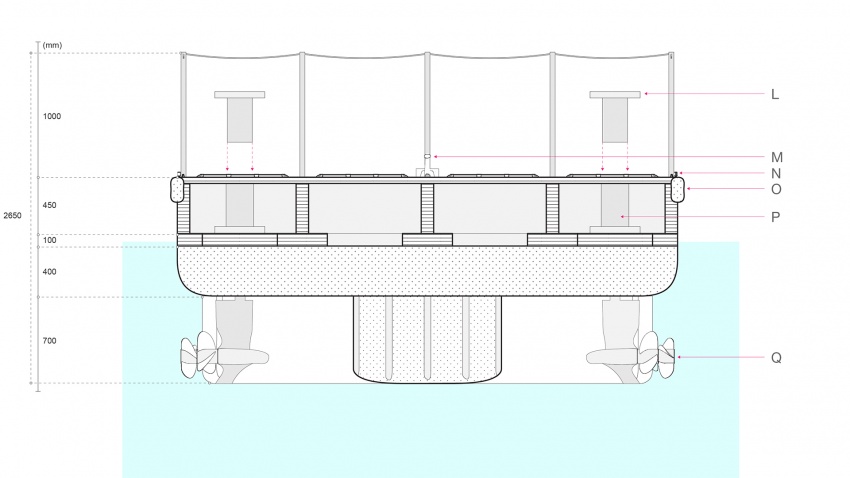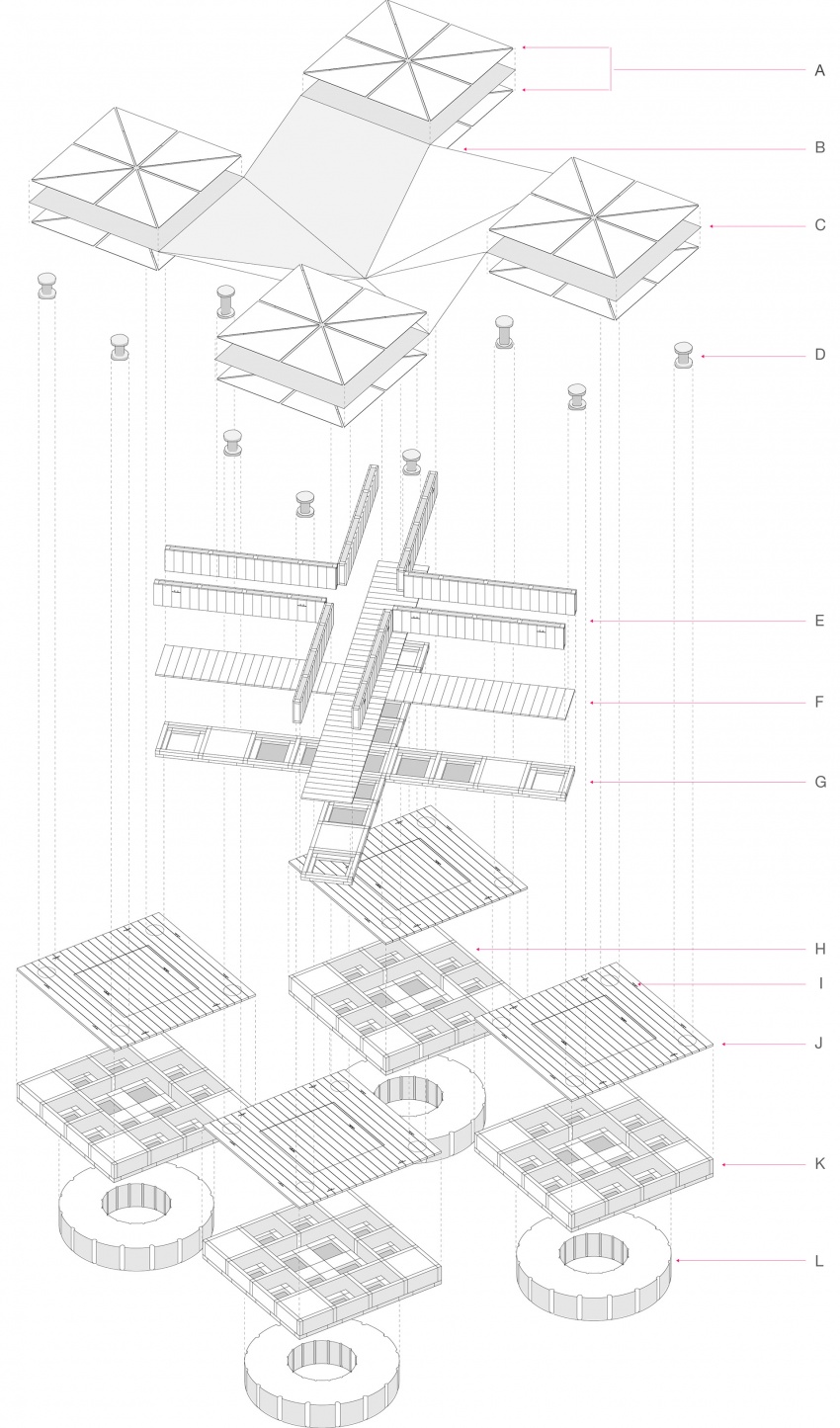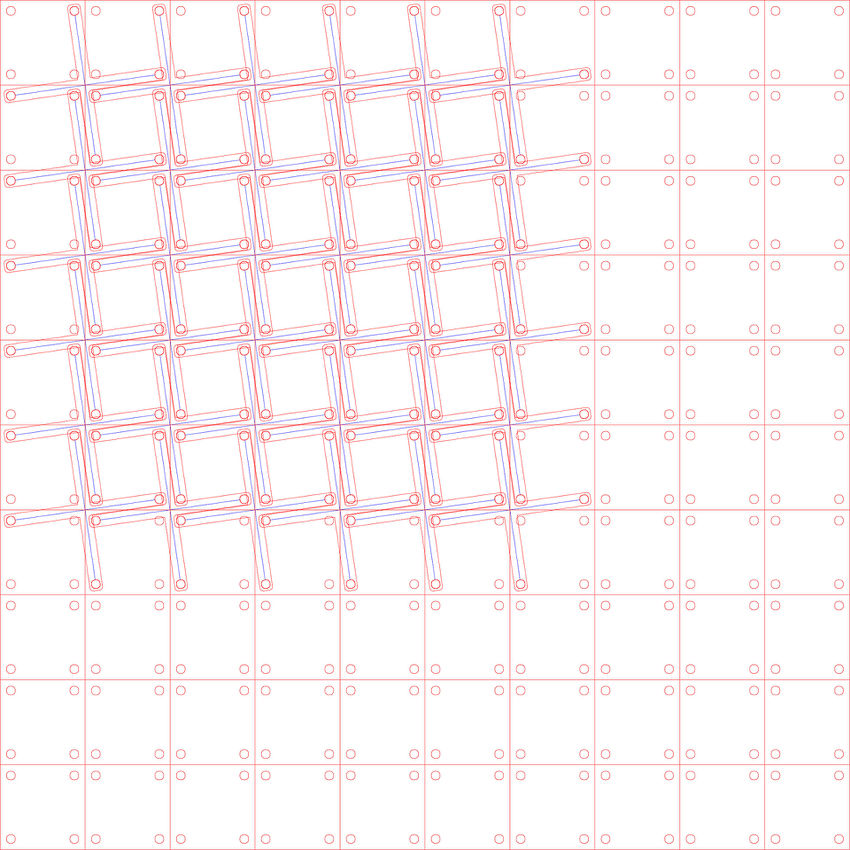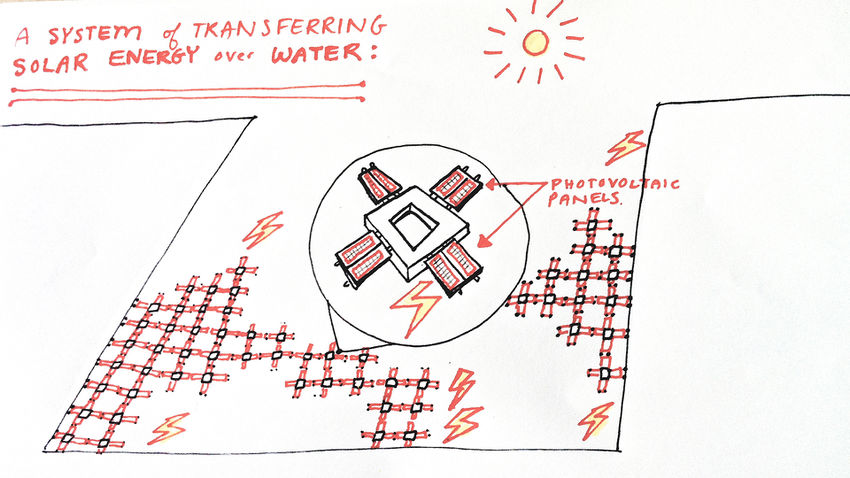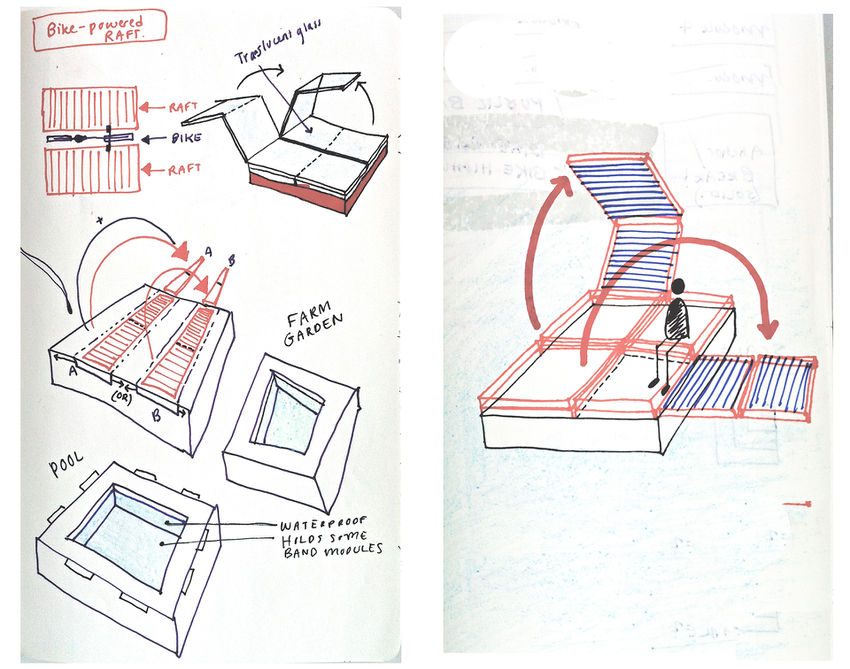project23:Performance
Contents |
Two-Unit System: ◘ & ✚
One distinct feature of the performance of the Deployable Bridge is its ability to act as simple linkage of two basic units (◘ and ✚). The units are connected and disconnect by a simple lightweight yet strong hinge around which both platforms (◘) and paths (✚) can rotate freely. This minimal model acts as a universal framework which supports a wide range of scenarios and reacts flexibly for disparate functions.
Base Geometry
As a simple linkage of two basic units (SQUARE and CROSS), the base geometry was designed as a universal framework to support numerous configurations. A single platform unit (SQUARE) comprises only 16 m2. However, when single platform units (SQUARE) are combined with path units (CROSS) in a cluster or large field, a more buoyant, stable floating system emerges which can support greater weights and more complex functions.
SELF-ASSEMBLY
1. Identify the steps of the assembly sequence.
2. Define programmable parts.
3. Derive energy for actuators from solar panels.
FORMATION 1: COMPACTED
0° / Solid Floor / Chill-Out Sport Modular components for Optional Covering are stored in each platform. Platforms are recessed below pathways to provide group seating. Optimal for lunch hours (students) and night life events (floating theater).
FORMATION 2: DEPLOYED
225° / Deployable Bridge / Greatest Reach This configuration is optimal as a bridging agent. Pathways should be flush and continuous in the final geometry. Platforms may be covered with a duplicate platform, thereby sandwiching the path geometry. Optional covering may include a deployable lightweight origami structure, formed by tracing the vertices and translation vectors of the rotation axes. Origami structure should include perforations to reduce wind load and may enable selection of different materials to guard against sun and rain.
MAXIMUM DEPLOYMENT
Most efficient configuration for traveling from point A to point B.
VARIABLES
Variable 1: Position of rotation axis on platforms. Variable 2: Position of rotation axis on pathways. Variable 3: Width of platforms. Variable 4: Width of pathways.
CONFIGURATIONS
ISLANDS float freely and have the capacity to regroup and cluster around certain projects according to need. Since the islands cover a maximum surface area on the water, solar harvesting can be optimized and farm plants receive generous sun exposure.
== ACTIVITIES ==
ISLANDS aims to cover the purposes of recreation, relaxation, sustenance, and transit by offering different module types to support each activity. For example, an RDM student may choose an ISLAND to find a dry, sheltered place to chill during lunch break. Simultaneously, a second modular form may support a floating solar farm, with maximized surface area and flexible angle toward the sun. Then another may act as a pontoon for boat repair. Meanwhile, a fourth module may transport people to all the other projects on-site and any points along the shoreline.
CONNECTIONS
The most crucial goal of the form for ISLANDS is connectivity. The aim is to connect outsiders (at sea) with insiders (on land) -- essentially, to bridge marine life with shore life. This includes sailors, students, workers, and local residents -- as reflected in the CONNECTIONS section. Therefore, the form should be modular and nest-able (or tessellated somehow). The various organizations possible for the modules (as a group) should react to any number of parameters such as water surface area / human density, project density, climate, daytime/nighttime, sunlight/shading, etc. In addition, the modules themselves could react to such parameters -- specifically, with the bend angle of the connective bands/gangways.
